 Italian Regia Marina, 1863-1896: RM Pirofrigata Roma, Venezia
Italian Regia Marina, 1863-1896: RM Pirofrigata Roma, Venezia
The Roma class ironclads were built in Italy for the Italian Regia Marina from 1863 during the rapid expansion of the newly created fleet. Only two were built, Roma and Venezia, the first having five 254 mm (10 in) and twelve 203 mm (8 in) guns but completed in 1869 she missed the war and battle of Lissa. Venezia was converted into a central battery ship during construction (eighteen 10-inch guns)and was completed in 1873, equally missing the war. They ended having an uneventful career, withdrawn from service and versed into auxiliary duties in 1880 and 1890, stricken in 1895, broken up for scrap in 1896 (Roma was already badly damaged by fire in 1895). #regiamarina #italiannavy #ironclad #roma #venezia
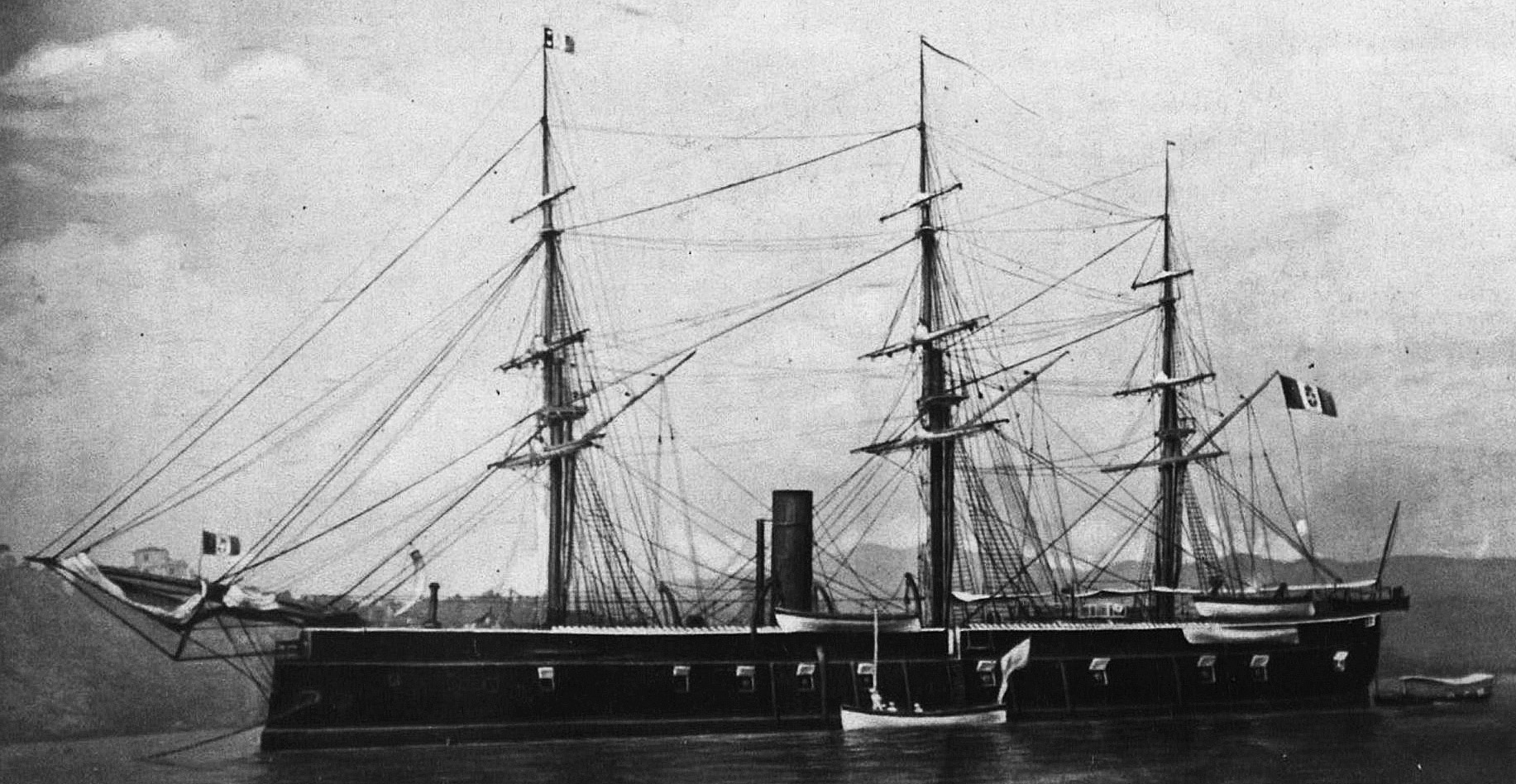
Roma at La Spezia as completed
Development history
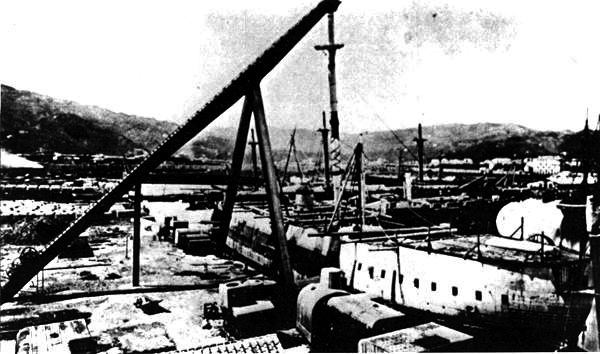
Venezia in construction
The Roma class were designed by Insp. Eng. Giuseppe De Luca as broadside ironclads in the wake of the general expansion of the Regia Marina, soon after the indepedence, fearing a war with Austria (which indeed broke out in 1866). However in 1864 as both had been laid down and were in construction at Cantiere della Foce (Genoa, NW Italy), some navies already started to work on the next generation or ironclads: The central battery ships. The idea was instead og having a full broadside and trying to protect all, concentrating less, but way more powerful guns into a smaller citadel, with extra protection and better traverse for the mounts. This enabled the ships to be shorter and required less armor, so making them faster and more agile. De Luca thus proposed to the admiralty to suspend work on the sister ship Venezia and re-designed her into a central battery ironclad while under construction. This was accepted not without resistance as it was feared she would not be ready if a war broke out, which was the case. In fact none of the two sisters were completed in time. Roma was launched on 18 December 1865 but it was recoignised she would not be ready in time, and construction was suspended, resuming post-war, meaning when completed in 1869, she was completely obsolete.
Her sister was also suspended and completed even later, by April 1873 (ten years in construction !), and so too was near obsolete. Part of this, apart events, was due to the relative inexperience of the Genoa yard.
The Austro-Italian ironclad arms race
⚙ The Austro-Italian naval Arms Race prior to Lissa (1864) | |
 Regia Marina Regia Marina |  KuK Kriegsmarine KuK Kriegsmarine |
|
Formidabile class 1860 Principe di Carignano class 1861 Re d'Italia class 1861 Regina Maria Pia class (1862) Roma class (1863) Affondatore (1863) Principe Amedeo class (ordered 1865) |
Drache class (1860) Kaiser Max class (1861) Erzherzog Ferdinand Max class (1863) |
Design of the class
Hull and general design
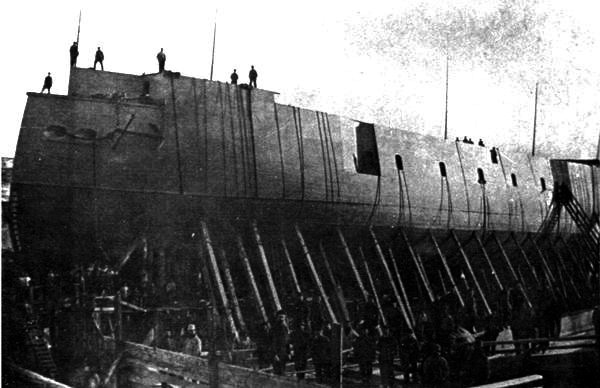
Launch of Venezia in 1869
As customary, the Roma class were wooden-hulled, however some structural elements were made in iron. Still there were not enough to have them considered of “mixed” construction. They varied in dimensions after Venezia was converted into a central battery ship: Roma measured 79.67 meters (261.4 ft) between perpendiculars. The overall length was superior due to her bowsprit mast. Her beam was 17.33 m (56.9 ft), average draft of 7.57 m (24.8 ft). Venezia was slightly longer at 79.65 m (261.3 ft) between perpendiculars, beamier at 17.48 m (57.3 ft), draftier of 7.6 m (25 ft). Roma displaced 5,698 long tons (5,789 t, normal load) and Venezia more, 5,722 long tons (5,814 t). Respectively fully loaded they displaced 6,151 long tons (6,250 t) on average. Their crew comprised during their early career between 549 and 551 officers and men.
Powerplant
They had both a single-expansion steam engine, drivin a single four-bladed screw propeller. Steam came by six single body cylindrical fire-tube boilers running on coal. They were all trunked into a single funnel amidships, a classic feature of the time. Top speed was 13 knots (24 km/h; 15 mph) on average, from 3,670 indicated horsepower (2,740 kW) which also was in the norms of the time. Range was 1,940 nautical miles (3,590 km; 2,230 mi) at 10 knots (19 km/h; 12 mph) based on their coal supply (unknown). Since confidence in steam power was relative at the time, she was fitted with a three-masted barque rig for long-distance, spread between four masts (with the bowsprit) over 31,833 square feet (2,957.4 m2), three stages per past, of total sail area. This meant they needed topmen for this task in addition to the gunners and machinists. A crowded ship indeed.
Protection
Protection was limited to a belt in wrought iron, 150 mm (5.9 in) thick, extending the entire length of the hull at the waterline for Roma. Venezia as redesigned had no belt but instead a casemate also in wrought armour plating, 121 mm (4.75 in) thick over the central casemate.
Armament
Roma
Roma being a broadside ironclad as completed, her main battery comprised however only five 254 mm (10 in) guns (one oin deck with some traverse, four in battery amidships) and twelve 203 mm (8 in) guns.
Venezia
Venezia being completed as a central battery ship her battery consisted in eighteen 254 mm gun located in an armored casemate amidship. The gun plan showed six per side, two in corners, four broadside in the casemate, but with limited traverse.
Upgrades
In 1874–75, both ships had their batterey removed and replaced by eleven 254 mm guns (Roma) or eight 254 mm, one deck 220 mm (8.7 in) (Venezia).
From 1886, Roma replaced the 254 for 220 mm guns and in 1890 she only had five 8 in guns.
Venezia became a training ship in 1881, with four 75 mm (3 in) guns, four 57 mm (2.2 in) guns for instructional purposes.
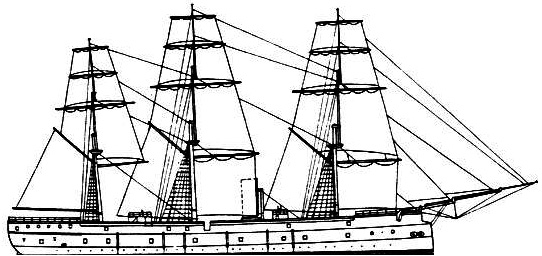
Roma profile
⚙ specifications |
|
| Displacement | Normal 5,698 long tons (5,789 t), Full load 6,151 long tons (6,250 t) |
| Dimensions | 79.67 x 17.33 x 7.57 m (261 ft 5 in x 56 ft 10 in x 24 ft 10 in) |
| Propulsion | One screw prop. marine steam engine, 6 fire-tube boilers 3,670 ihp (2,737 kW) |
| Speed | 13 knots (24 km/h; 15 mph) |
| Range | 1,940 nmi (3,590 km) at 10 kn (19 km/h; 12 mph) |
| Armament | 5 × 254 mm (10 in) guns, 12 × 203 mm (8 in) guns |
| Protection | Belt armor: 150 mm (5.9 in) |
| Crew | 549–551 |
 Roma
Roma
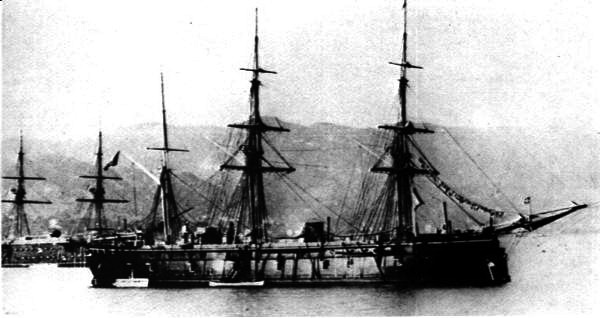
In service in 1869, three years after the Third War of Independence, Roma was found in a new context of disgrace for the Italian Navy and budget constraints. She worked at first with a limited crew, while other older broadside ironclads saw their crew disbanded. Between 1874 and 1875 she had a major armament upgraded, as saw earlier, gaining eleven 254 mm (10 inches) guns.
In November 1881 she was in Naples during a violent hurricane, broke her moorings and ended gently bumping alongside the coastal ironclad Principe Amedeo, so neither reported significant damage.
In 1890, Roma was considered obsolete, and she had a nucluse service crew, armed with five 203 mm guns (8 inches), her engine completely worn, masts cut out, she was permanently anchored as a floating battery as the defensive system of La Spezia naval base.

After she was stricken from the navy’s list on 5 May 1895, she remained in La Spezia now disarmed and used as ammunition depot, loosing her name, freed for a more modern vessel. On 28 July 1896 during a storm, she was was struck by lightning, caught fire and to avoid explosion as the fire was uncontrollable, a torpedo boat immediately on guard that day was ordered to open fire, and she was torpedoed, sinking on site. After a month her wreck was refloated, raised to the surface and sent for breaking up for scrap at the Arsenal.
 Venezia
Venezia
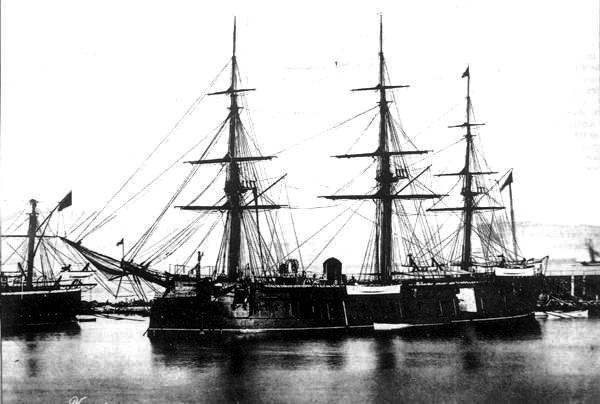
Built at the Genoese Foce shipyards from February 1863 under the inspector general of the Naval Engineers, engineer Giuseppe De Luca’s design, she was not completed before April 1873, after ten years of work. Indeed while not launched yet it was decided to convert her as the first Italian central battery ironclad. Sje would have only 17 main guns, while a brand new casemate was built amidship. In the end she was able to fire in chase and retreat with two main guns, plus lighter ones on deck, and four each broadside. She had far more value than her obsolete sister.
In all she had twenty-three years of service (detailed records in research) seeing only cruises and yearly fleet exercises wthout notable event. Venezia never was deployed in operation at tha time of “pax britannica”. Between 1874 and 1875 she was modenrized, keeping her casemate but with eighteen 254 mm cannons, one 220 mm with 360° traverse on deck.
In 1881 the admiralty saw her as obsolete. Her masts were cut out and her armament removed. She became at that stage a torpedo training ship in La Spezia, a role she kept until 23 August 1895, stricken, her name freed for other ships. She was BU in 1896.
Read More/Src
Books
Fraccaroli, Aldo (1979). “Italy”. Gardiner, Robert (ed.). Conway’s All the World’s Fighting Ships 1860–1905.
Ordovini, Aldo F.; Petronio, Fulvio & Sullivan, David M. (December 2014). “Capital Ships of the Royal Italian Navy” 1860–1918 Warship International 51
Sondhaus, Lawrence (1994). The Naval Policy of Austria-Hungary, 1867–1918. Purdue University Press
Sondhaus, Lawrence (2001). Naval Warfare, 1815–1914. New York: Routledge.
“The Naval Demonstration in the Adriatic”. The Illustrated London News. London: George C. Leighton.
Links
agenziabozzo.it Roma
agenziabozzo.it Venezia
on marina.difesa.it/
it.wikipedia.org Classe_Roma
en.wikipedia.org Roma-class


 Latest Facebook Entry -
Latest Facebook Entry -  X(Tweeter) Naval Encyclopedia's deck archive
X(Tweeter) Naval Encyclopedia's deck archive Instagram (@navalencyc)
Instagram (@navalencyc)





 French Navy
French Navy Royal Navy
Royal Navy Russian Navy
Russian Navy Armada Espanola
Armada Espanola Austrian Navy
Austrian Navy K.u.K. Kriegsmarine
K.u.K. Kriegsmarine Dansk Marine
Dansk Marine Nautiko Hellenon
Nautiko Hellenon Koninklije Marine 1870
Koninklije Marine 1870 Marinha do Brasil
Marinha do Brasil Osmanlı Donanması
Osmanlı Donanması Marina Do Peru
Marina Do Peru Marinha do Portugal
Marinha do Portugal Regia Marina 1870
Regia Marina 1870 Nihhon Kaigun 1870
Nihhon Kaigun 1870 Preußische Marine 1870
Preußische Marine 1870 Russkiy Flot 1870
Russkiy Flot 1870 Svenska marinen
Svenska marinen Søværnet
Søværnet Union Navy
Union Navy Confederate Navy
Confederate Navy Armada de Argentina
Armada de Argentina Imperial Chinese Navy
Imperial Chinese Navy Marinha do Portugal
Marinha do Portugal Mexico
Mexico Kaiserliche Marine
Kaiserliche Marine 1898 US Navy
1898 US Navy Sovietskiy Flot
Sovietskiy Flot Royal Canadian Navy
Royal Canadian Navy Royal Australian Navy
Royal Australian Navy RNZN Fleet
RNZN Fleet Chinese Navy 1937
Chinese Navy 1937 Kriegsmarine
Kriegsmarine Chilean Navy
Chilean Navy Danish Navy
Danish Navy Finnish Navy
Finnish Navy Hellenic Navy
Hellenic Navy Polish Navy
Polish Navy Romanian Navy
Romanian Navy Turkish Navy
Turkish Navy Royal Yugoslav Navy
Royal Yugoslav Navy Royal Thai Navy
Royal Thai Navy Minor Navies
Minor Navies Albania
Albania Austria
Austria Belgium
Belgium Columbia
Columbia Costa Rica
Costa Rica Cuba
Cuba Czechoslovakia
Czechoslovakia Dominican Republic
Dominican Republic Haiti
Haiti Hungary
Hungary Honduras
Honduras Estonia
Estonia Iceland
Iceland Eire
Eire Equador
Equador Iran
Iran Iraq
Iraq Latvia
Latvia Liberia
Liberia Lithuania
Lithuania Mandchukuo
Mandchukuo Morocco
Morocco Nicaragua
Nicaragua Persia
Persia San Salvador
San Salvador Sarawak
Sarawak Uruguay
Uruguay Venezuela
Venezuela Zanzibar
Zanzibar Warsaw Pact Navies
Warsaw Pact Navies Bulgaria
Bulgaria Hungary
Hungary

 Bundesmarine
Bundesmarine Dutch Navy
Dutch Navy Hellenic Navy
Hellenic Navy Marina Militare
Marina Militare Yugoslav Navy
Yugoslav Navy Chinese Navy
Chinese Navy Indian Navy
Indian Navy Indonesian Navy
Indonesian Navy JMSDF
JMSDF North Korean Navy
North Korean Navy Pakistani Navy
Pakistani Navy Philippines Navy
Philippines Navy ROKN
ROKN Rep. of Singapore Navy
Rep. of Singapore Navy Taiwanese Navy
Taiwanese Navy IDF Navy
IDF Navy Saudi Navy
Saudi Navy Royal New Zealand Navy
Royal New Zealand Navy Egyptian Navy
Egyptian Navy South African Navy
South African Navy






























 Ukrainian Navy
Ukrainian Navy dbodesign
dbodesign